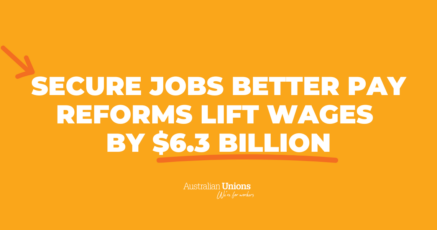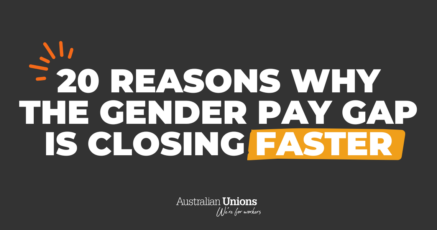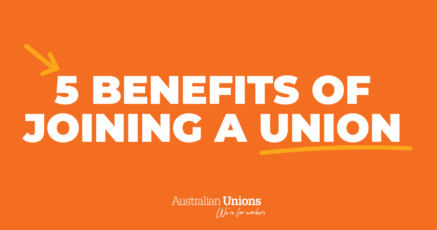Whether you label it a women’s budget or a pink budget (please don’t), Australian Unions is calling on the Morrison government to finally deliver for women in the 2021 Federal Budget.
We’ve joined together with parent, work and business groups to put women’s economic security and safety front and centre in the budget.
Why now?
Although gender inequality has long existed for women, the pandemic has shone a light on the growing problems impacting women in Australia.
The Federal Budget is an opportunity for our Government to take the urgent action needed to tackle inequality and build a better, fairer, safer Australia.
Here’s what we want see.
1. Bring back the women’s budget statement
A women’s budget statement outlines how budget measures will affect women.
It was first introduced in 1984 by the Hawke government and continued for 30 years…until the infamous Abbott-Hockey budget in 2014.
Although most government policies appear gender neutral, some will affect men and women differently. For a truly fair COVID-19 recovery, we need to make sure the gender impacts of the budget are understood. And that the women’s sector gets a say before decisions are made.
It’s not a new idea, and we’re not alone in thinking it’s a good one. Almost half of the 37 countries in the OECD now have some form of gender budgeting, including Canada, Germany, Japan and Sweden.
It’s time to bring it back.
2. Invest in and reform early childhood education
Investing in early child education is vitally important to our economic recovery, and we must keep working towards the goal of universal access to quality early childhood education and care.
This starts with making early childhood education and care more affordable and investing funds to attract and keep highly skilled, better paid educators in secure employment.
Aside from the obvious benefits to children, better investment in early childhood education will help repair the employment prospects of women workers and create much needed economic growth opportunities.
Making childcare more affordable and accessible will help boost women’s workforce participation – the more women can participate in the workforce, the more disposable income in their households, and the more money they can spend. A win for women, and the economy.
3. More paid parental leave
We want to see the Morrison government expand the Paid Parental Leave Scheme to 26 weeks, flexibly shared by both parents and providing an additional two weeks leave for each parent when care is equally shared.
Much like the high cost of childcare, our inadequate paid parental leave scheme can make it hard for women to fully participate in the work force – and leaves them doing most of the unpaid household work.
Research has shown shown the average 25-year-old woman who goes on to have a child can expect to earn A$2 million less by the time she is 70 than the average 25-year-old man who becomes a father. This is what equality looks like. We need to do more for mums.
4. Increased domestic, family and sexual violence services funding
The 2021 budget must provide new and adequate funding for domestic, family and sexual violence services as well as funding for improved prevention of gendered violence, an accountability mechanism and law reform.
A quick glance at recent headlines is enough to see the urgent need to prevent gendered violence in Australia – from the shocking episodes of sexual assault and harassment to family violence tragedies.
These problems existed before COVID-19 but the pandemic has put women at greater risk. Australian Unions International Women’s Day Report revealed that more than one in ten Australian women experienced abuse, harassment and controlling behaviours since the pandemic started, with more than half of those reporting family and domestic violence saying it had become worse or more severe since COVID-19.
It’s time for employers, states, territories and the federal government to put aside politics and act to protect women.
5. Improved aged care funding and workforce issues
The Federal Budget must provide adequate funding for aged care – enough to address the workforce issues facing the sector including low pay, inadequate training, and dangerous staff to resident ratios.
The majority of workers in aged care are women, and they are facing a crisis of insecure work – with most employed casually or having to work multiple jobs.
Insecure work means employers can cut hours, change rosters and fire staff without compensation. Insecure workers are also more likely to be unsafe at work for a range of reasons, including inadequate training and induction and fear of reprisals for speaking out about safety concerns.
The pandemic exposed the dangers of understaffed and underfunded aged care facilities for staff and residents alike. The Government must act now to protect both these workers and the older Australians they care for.







SHARE:
2021 Budget: 5 ways the Government can do more for women